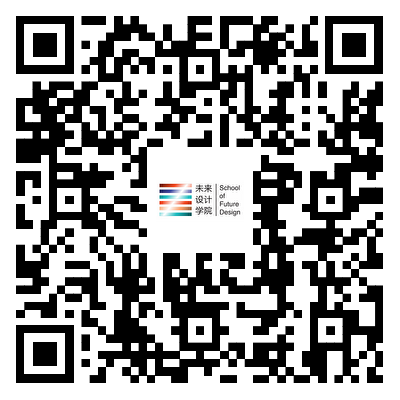Review of “Future Design Ideas (Shenzhen)”: Exploring Future Design and Human Living Environment
On July 31, Beijing Normal University School of Future Design, in collaboration with the China Academy of Building Research, international brand K三 and C Future Lab, held the "Future Design Ideas Club" event in Shenzhen to discuss future design, future lifestyle and human living environment. The event was also live-streamed on the Kuaishou video-sharing platform and was watched by 1.17 million people online.
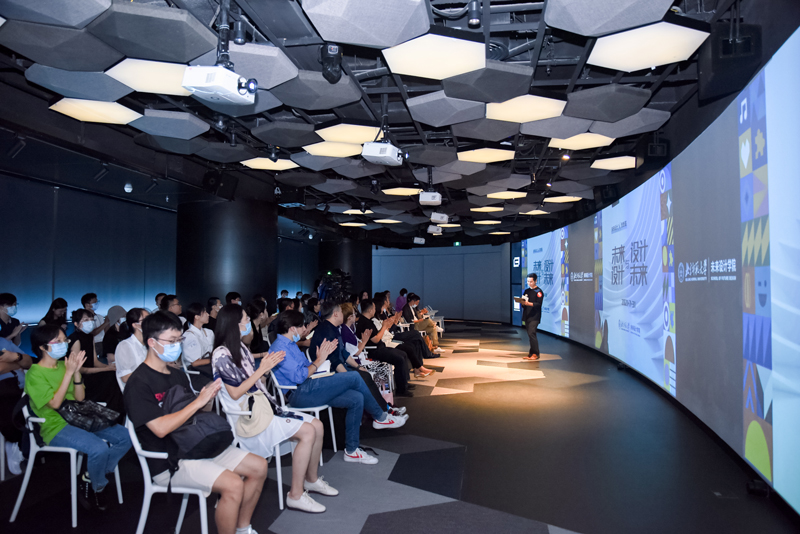
At the event, Gao Peng, head of School of Future Design, gave a keynote speech on future design, the combination of art and technology, as well as the development plan, discipline construction, teaching characteristics and enrolment plan of the School. The K三brand, founded by world-renowned designer Kenzo TakadaK, made its debut in China. Zhao Lei, head of K三 Asia-Pacific region, introduced the brand's understanding of lifestyle and shared the aesthetic view of life advocated by Kenzo Takada throughout his life on the combination of future design and traditional culture. Fu Shaopeng, Director of the Institute of Urban Renewal and Construction of the China Academy of Building Research, shared how design creates the future and the future changes design from the perspective of future human living environments. Lv Hua, head of C Future Lab, explained the design power and trends in Shenzhen in the context of the lab's contemporary art and design projects.
The School of Future Design signed PBL teaching collaborative enterprise agreements with China Academy of Building Science, K 三 and C Future Lab to build a talent training system. The School will adopt PBL (Problem-Based learning) teaching mode to provide solutions to real problems of enterprises, and enterprises will provide internship positions and project practice opportunities for students of the School.
In September 2021, the School of Future Design started to officially enroll full-time and part-time students for MFA program, with a total enrolment of 60 students and a three-year duration of study. The program adopts a mode of mobile classroom with the Zhuhai campus as the main campus, supplemented by various teaching bases, enriched teaching venues and practice bases, and gathers top teachers in the field of art and design from China and abroad, aiming to build a leading school of China's art and design education. At the same time, the program offers scholarships and overseas exchange program, covering more than 50% of the intake. In addition, the School plans to recruit second-degree undergraduates from society next year, and to start the undergraduate enrolment in 2023.
"Interdisciplinary innovation and cultivation, establishing a design school for the Greater Bay Area"
by Gao Peng, Head of the School of Future Design, Beijing Normal University
At the lecture, Gao Peng firstly introduced the background of the establishment of Beijing Normal University School of Future Design. Starting from the questions of "what kind of world we are facing", "what kind of talents are needed" and "how to build a disciplinary framework for training talents", he suggested that in the 21st century, the rapid development of science, technology and economy has led to the need for more professional and developmental students in education. He emphasized that the future design discipline framework at BNU is "Student Competence Building + Existing Disciplines + Practical Projects". He said that the School of Future Design of Beijing Normal University will cooperate with famous enterprises at home and abroad and top international academic institutions, to boost the integration and development of the Guangdong-Hong Kong-Macao Greater Bay Area.
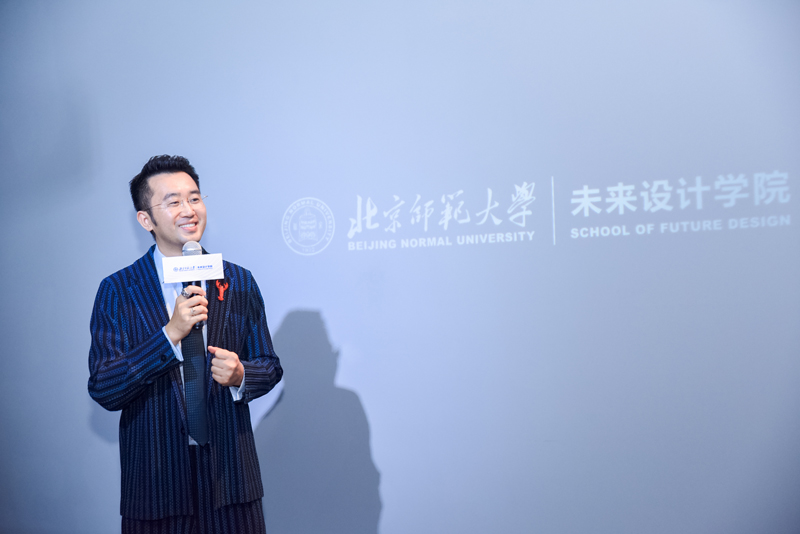
Afterwards, Gao Peng introduced the three research directions of the School of Future Design.
"Design and Future Production and Lifestyles" is a comprehensive design for future production, lifestyles and future social forms. The program will also expand into future lifestyle research, future habitat design, future experience design and other forward-looking specialisms.
"Art and Technology" is a conceptual design research for cutting-edge issues, exploring and practicing conceptually in the frontiers of digital media art, multimedia design, interactive design, artificial intelligence visualization design and other aspects, dovetailing with international frontier disciplines and striving to achieve first-class academic research results.
"Design and Education" is a study on the teaching of design majors and future design education, which reflects the strengths of Beijing Normal University's education and psychology disciplines, highlights the characteristics of teacher-training institutions, creates a new direction of interdisciplinary design education, and explores the future direction of design education.
Gao Peng said that the School of Future Design has employed seven leading professionals in the design discipline, namely Tan Ping, Wang Min, Xu Ping, Tony Brown, Li Qi, Miriam Mirolla and Tim Yip. They will provide all-round guidance and planning for the discipline construction and development direction of the School of Future Design, bringing the best guidance and assistance to students.
In terms of teaching characteristics, the School of Future Design advocates a problem-based teaching approach and adopts a PBL teaching model with a project-based teaching approach of “academic advisor + enterprise tutor” to lead students to search for solutions to problems based on their areas of expertise. At present, the School has established university-enterprise collaborative partnerships with Lenovo and Haier, and signed a strategic cooperation framework agreement with China-Domus. It plans to establish diversified cooperation with leading innovation enterprises in the Greater Bay Area in the future, build a PBL teaching enterprise project bank, innovate teaching organisation forms, enrich the teaching connotation, and create a talent education and training system that integrates teaching, research and industry.
With the Beijing Normal University Zhuhai Campus as its main teaching base, the School of Future Design at Beijing Normal University plans to establish teaching bases of different levels in Shenzhen, Guangzhou, Macao and Hong Kong in cooperation with local renowned enterprises, to create a School of Future Design for the Greater Bay Area, actively dovetail with major and forward-looking design needs in line with the development of the Greater Bay Area, and serve the strategic demands of the country.
In the end, Gao Peng pointed out that China needs a group of distinguished scholars and industry experts who represent the level of the design discipline and lead future design education.
"Inheriting the essence of tradition, creating timeless design with technology"
by Zhao Lei, Asia-Pacific General Manager of K三
Zhao Lei shared the design philosophy of the French brand K三 and her thoughts on the topic of "Designing the Future" and "Future Design".
K 三 is a luxury home and lifestyle brand founded by renowned Japanese designer Kenzo Takada nearly two decades ago, covering furniture living, artifact design and building design. Rooted in Eastern culture and combined with Western aesthetics, the brand is a colorful ode to life by combining traditional and modern art.
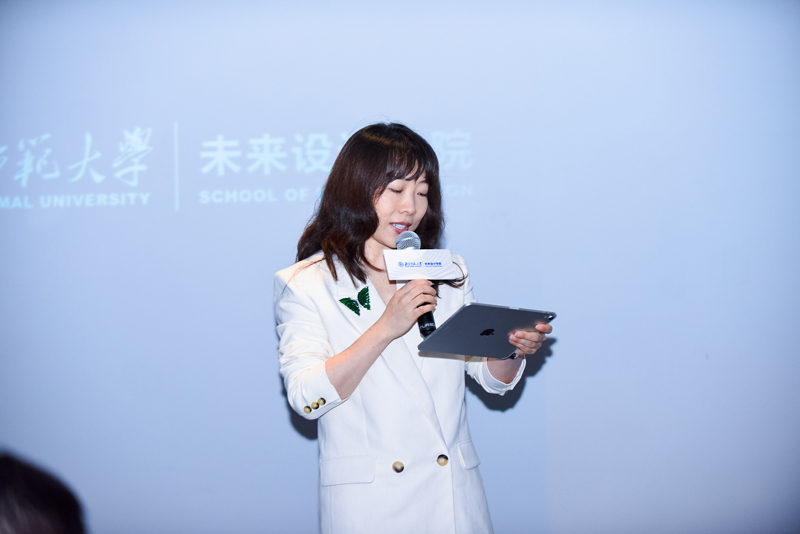
K 三’s designs attempt to modernize traditional aesthetics to interpret the concept of 'timelessness'. The founders and the design team are constantly exploring and experimenting with new techniques to bring out the beauty of the original design, while also ensuring that the design is more sustainable over time.
During the presentation, Zhao Lei showed the audience K三's brand film and product line introduction film, and brought a video specially recorded for the event by Jonathan Bouchet-Manheim, CEO of K三 France.
Zhao Lei points out that Kenzo Takada's future-oriented vision is not limited to fashion, but extends to many fields, as exemplified by two landmark events in 2005, when he collaborated with Coca-Cola on a light show that illuminated the whole of Paris with his designs. Kenzo Takada, a master designer in the fashion industry, was first involved in light and shadow design. Now, over a decade later, the art of light and shadow has become a popular trend worldwide. Also, in 2005, Kenzo Takada founded the Five Senses Workshop, a production line corresponding to each of the five senses: form, sound, smell, taste and touch, a concept that is today widely known and applied in the design world.
K三's creations apply many traditional techniques of craftsmanship, but also modern industry and science and technology, K三advocates the inheritance of the essence of tradition and the use of new technologies to create and realize timeless designs that have an aesthetic worthy of longevity and transcend the limits of time, while complementing contemporary science to meet the aspirations of human society. goodwill and reverence towards the future. Looking back at the past is more than simply connecting to it; it is creating a design philosophy that looks to the future with tradition.
From Chinese architecture to Chinese miracles, in the rapid development of industry and cities, what direction will the future of space and human life take? Fu Shaopeng discussed with the audience about the theme of "design creates the future, the future changes design".
“Design Creates the Future. Future Changes the Design”
by Fu Shaopeng, Director of China Academy of Building Research
From Chinese architecture to Chinese miracles, in the rapid development of industry and cities, what direction will the future of space and human life take? Fu Shaopeng discussed with the audience on the theme of "design creates the future, the future changes design".
Fu Shaopeng said that the establishment of the School of Future Design at Beijing Normal University is a very meaningful and forward-looking herald for the design industry in China.
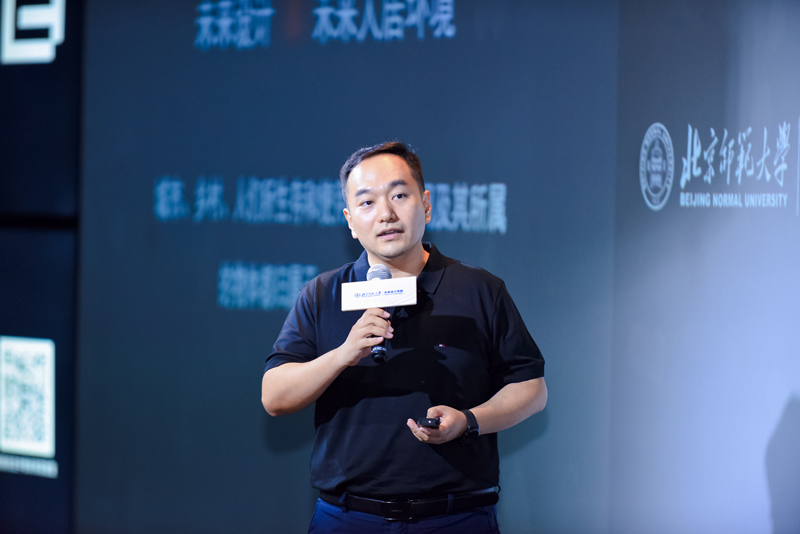
One of the new research topics of the School of Future Design at Beijing Normal University is future design, also known as the study of future human living environment. At an earlier time, Wu Liangyong of Tsinghua University had already proposed the concept of "the Science of Human Living Environment", and the School of Future Design of Beijing Normal University has again proposed the research direction of "Future Human Living Environment", which is very meaningful at present. Fu Shaopeng believes that in cities and villages, the physical space that people live in and use and the objects they belong to all belong to the habitat environment.
u Shaopeng mentions that the topics that the School of Future Design of Beijing Normal University focuses on outline the environment and needs of people's survival and life, covering four major aspects: clothing, food, housing and transport. In the area of "housing", the sub-disciplinary areas include urban and rural area planning, architecture and so on. There are already a number of communities in China that focus on ecological construction and green and healthy living, which also heralds a new starting point for the future of Chinese living. People's future living environment and conditions should be one of pleasant, low-energy, ecological and healthy living in a reinforced concrete building. He said that in this regard, the China Academy of Building Research is leading the way nationwide and looked forward to the next step of having close cooperation with the Future Design Institute of Beijing Normal University to jointly promote the research of future human living.
Fu Shaopeng explained the new direction of future habitat development, using the Institute's existing building projects as examples. The Beijing CP Group Headquarters project focuses on the comfort of working and the convenience of working in super high rise, creating a pleasant living and working environment; the Tianjin Sino-Singapore Eco-city project is an urban planning project polished by the China Academy of Building Research for nearly 15 years, and is a 30 square kilometre Tianjin Binhai New Area jointly created by China and Singapore. The project's guidelines have all adopted advanced international technical concepts in an attempt to create a pleasant, ecological and recyclable urban area. The project was named China's happiest eco-city in November 2018 and is a waste-free city. He noted that this is a major direction for the future development of the Greater Bay Area. Fu Shaopeng emphasised that future design should be about depicting our ecologically green and healthy home through the use and integration of technological innovation. This is also the professional ethics of architects and urban planners.
Finally, on behalf of the China Academy of Building Research, Fu Shaopeng expressed his expectations for the School of Future Design of Beijing Normal University, hoping to reach a close cooperation with each other to train a new generation of designers and bring more wonderful works for China's architectural design and urban planning, as well as a more comfortable living environment for people.
"Shenzhen, to become a global leader in innovation and creativity"
by Lv Hua, Director of C Future Lab
Lv Hua discussed the design concept of the "C Future Lab" and shared his practical experience in "designing the future" as the director of C Future Lab.
Shenzhen, the city where C Future Lab is located, has always been the first place in China to "experiment with the future". In this land of experimentation, there are new opportunities and challenges. C Future Lab aims to create a living and working environment in the city of the future, to promote the design of the future and to participate in an experiment and practice of the city of the future.
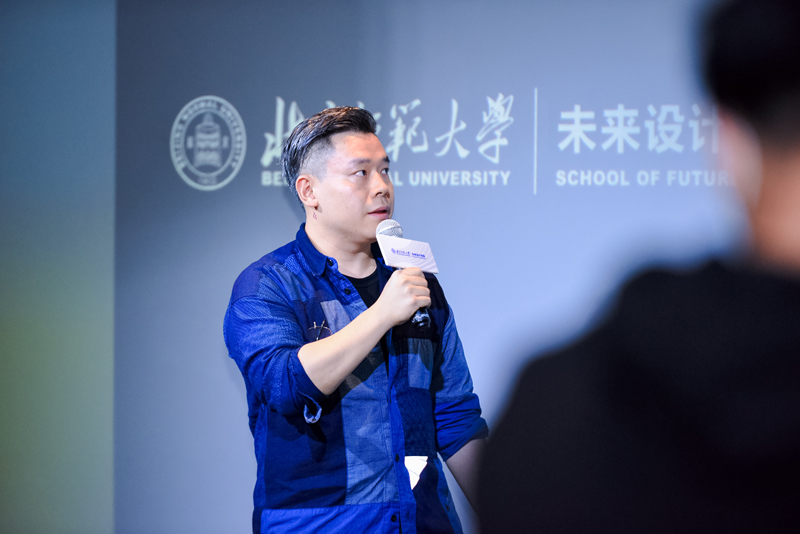
Lv Hua said that during the construction process, the team hopes that the Future City will bring constant inspiration to everyone's work and life, while the C Future Lab is the main body and platform of the Future Experiment, whose goal is essentially to experiment with the future. The goal is essentially to experiment with the future and put it into practice. With this aim in mind, the team is working together to explore the future by combining efforts from different fields.
Currently, the C Future Lab is promoting urban experimental samples such as C Future City and C Future Park. C Future City, where this event will be held, is an urban mixed-use project covering an area of approximately 1.3 million square metres, which will be developed into a future community that integrates working, living, learning, socialising and sharing, and this is the first experimental sample of the Zhongzhou Future Lab. Another experimental sample is C Future Park, a complex for the creative and design industries, dedicated to promoting creativity and design in the Greater Bay Area.
Lv Hua believes that Shenzhen will become a place where global innovation and creativity converge and even lead as it advances in synergy with the entire Greater Bay Area. Every project and every detail of the C Future Lab incorporates a vast range of design wisdom and seeks to provide a space for the production of innovative ideas.
Roundtable Dialogue

Q: "How would ideal future life look like?"
Zhao Lei: Everyone has a great vision for future life. Inevitably, at special times, everyone is also a little bit confused about their future. But I am convinced that each of us will carry better emotions in our future lives, and each of us hopes that our lives will be more comfortable. At the same time, every artefact we use is more user-friendly, reasonably priced and practical. We also want more poetry and beauty in our lives. Design is a personal expression to have an interaction with people. It is also based on people’s lives and their desire for a better future.
Fu Shaopeng: My aspirations for the future of life are happiness, joy and health, and I think these three words should also be the aspirations of most people. People's aspirations for life are relatively simple and traditional, but to realize it requires inheritance as well as constant change and innovation. The design profession has emerged to bring more convenience, comfort and happiness to people's lives and work. Design is a profession that changes people's future. As technology advances, people's minds open up, which in turn affects the designers' thinking and technical means. It is a process of constant intermingling. I hope that the School of Future Design of Beijing Normal University will bring fresh blood and innovative opportunities to China’s design industry, and enhance happiness in life and work.
Lv Hua: Thinking about the future of life, it is not just for one person. Instead, it is for all people. Given this reason, what we have been doing is also trying to find the answer to this question - What would future life turn out to be? The future may see more people realise that they have the ability to design their own lives, to take charge of their own lives, and thus to dare to imagine their own lives. If the future social environment encourages individuals to pursue their own goals, such a society could become interesting.
Q: "What kind of designers are enterprises looking for? What kind of students are cultivated through design education?"
Zhao Lei: We expect designers to have a passion for design, as well as the ability to learn new technologies and techniques and to apply them in their designs. Designers should have a certain level of cultural literacy and be able to draw inspiration from their own culture and exotic cultures. In terms of university education, we hope our students can come out of the university with hands-on practical skills, rather than improving such skills in enterprises. We expect both undergraduates and postgraduates can adapt themselves into the real working environment through internship quickly after graduation and create a positive working atmosphere with their colleagues.
Fu Shaopeng: For the employer, the first requirement is that the designer should have a solid foundation; for me personally, I hope that designers can feel their work rewarding with a sense of fulfillment and belonging to the team, which is a win-win and two-way selection for both future enterprises and design talents.
Lv Hua: The first thing is that designers should have an open mind and be willing to learn and think independently, especially in this rapidly developing and changing society, where technology, art and design intermingle. Designers should become life-long learners with enthusiasm. Secondly, designers should have ambitions originating from their persistent pursuit for design and aesthetics, which requires designers to have good tastes, international vision and a tenacious mindset.










